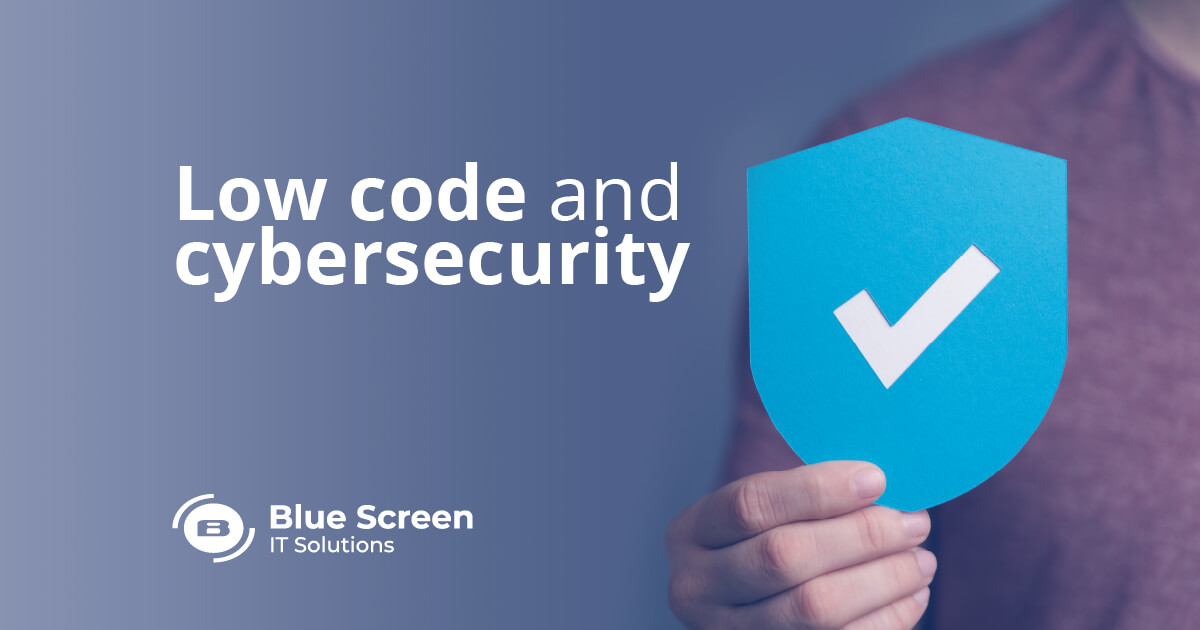Do low code platforms produce a minefield of vulnerable code? This is a question everybody is asking these days, wondering if cybersecurity in low-code is an effective concern and if it can represent a serious risk to their business or organisation, particularly now the GDPR is in force.
Low-code platforms makes software creation more accessible within the organization, and at the same time, it supports exponential creativity.
By making things easier, will the use of low-code application development take a kind of easiness and less discipline in relation to cybersecurity?
On the contrary. Low-code may be even more secure than other traditional technologies but, as in every case, it is necessary precaution. The question is that low-code security is still not well understood by all the companies.
Let us start by the very beginning:
- One of the key benefit of low-code is the significant reduction in application development costs and, mainly, those linked to maintenance which, statistically, represent a huge part of the total lifecycle cost.
- Gain in time and productivity by having less specificities in code, errors are immediately minimized and, if they still exist, they can be fixed more easily.
- As applications are controlled by a single system, the integrity is guaranteed, which is a key strategic thing in a highly dynamic situation with changes in functionality – dependency checks do not allow broken applications to reach production.
- Last but not least, low-code platforms maintain higher security standards than traditional applications because non-functional requirements, such as security, is managed by the vendor’s platform across all of its lifecycle and it is hosted on a secure cloud.
Cybersecurity in low code is here to stay
Low-code platforms are, by definition, secure, and less risky. Many managers and developers keep being sceptical however, due to three main questions:
- Do low-code platforms write secure code?
- Do low-code platforms create opportunities of scale for hackers?
- Are less technical users keener to create vulnerabilities?
Although each of these may be pretty valid concerns, fact is that they are mitigated by both users and app building platform providers so cybersecurity is not at risk.
Off-the-shelf software systems may receive regular security patches or have known vulnerabilities over a decade old. By the other hand, there is always the possibility that a custom application developer may write secure code but makes a mistake.
Of course, security is an important issue for anyone looking to adopt low-code solutions. Fortunately, low-code platforms have a development security model that covers design, implementation, and architectural validations. In addition, the platforms are highly robust and continuously tested, with security being an extremely important issue for everybody involved.
Low-code platforms implement built-in security layers that are deployed along with every application created. Meaning, developers using these platforms do not need to worry about all the security details as the platform “implements” it for them.
During application development, low-code platforms rely on security tests that go from the beginning of the process cycle until its very last minute, all of them done continuously.
Finally, low-code platforms are typically a PaaS model, meaning, security patches come along more frequently and effectively.
An ever-growing market!
And all the above benefits are starting to be taking serious by the market, as it adopts more and more low-code development. According to Reportlinker.com, the low-code development platform market is projected to grow from 13.2 billion dollars in 2020 to 45.5 billion dollars by 2025, at a compound annual growth rate (CAGR) of 28.1%
The low-code development platform simplifies the designing, modelling, and implementing of business application and refining and optimizing processes, which involves human interaction or multiple business disciplines. Therefore, the platform segment registers the highest growth rate during the forecast period.
What to expect next?
Thousands of companies are now turning to low-code platforms because they can easily deliver to the business complex web applications, quickly.
Healthcare institutions have found new ways of doing business by creating telehealth platforms; educational organizations have deal with budget-challenged IT departments on the moment they gave teachers the freedom to create the tools they need. Also, logistics and transport companies have transformed and adapted their industries with brilliant supply chain apps. All supported on low-code development; all of them highly secure, off course, as they deal with sensitive data!
XPressBSS or LMS – There is no secrets anymore!
All Blue Screen IT projects are developed with strong security concerns in mind. Whether we are talking about an LMS (Legal Management System) or XPressBSS project, there is always security on it.
LMS is an advanced legal case management software that provides powerful administration and tracking of litigation processes and debt collection. Working on such critical environments like the legal and financial sectors, security has to be an important point. LMS enables better communication between many company departments and legal firms or legal firms and their clients, for example, tracking important deadlines, managing cases, documents, expenses and collections.
By the other hand, XPressBSS, is a customized low-code Enterprise Resource Planner (ERP) powered by OutSystems that focuses on the simplicity of use, enhances the mobility and internationalization, and provides a comprehensive view of the business, resources, costs and income. But this is also an ERP made with security in mind. If you have a large warehouse and do have to manage stocks, if you need to deal with supply chain management or any other issue towards logistics, there is no better solution.
No wonder that for every application built on these technologies, there will be automatically applied by OutSystems, more than 200 (and growing) risk and security controls covering categories like:
- Application protection
- Continuity and availability
- Data protection
- Infrastructure protection
- Policies and procedures
And by “application,” you can read all types of applications including web or mobile apps, as well as core software such as ERP and CRM systems.
If you want to know more, please contact our team.

